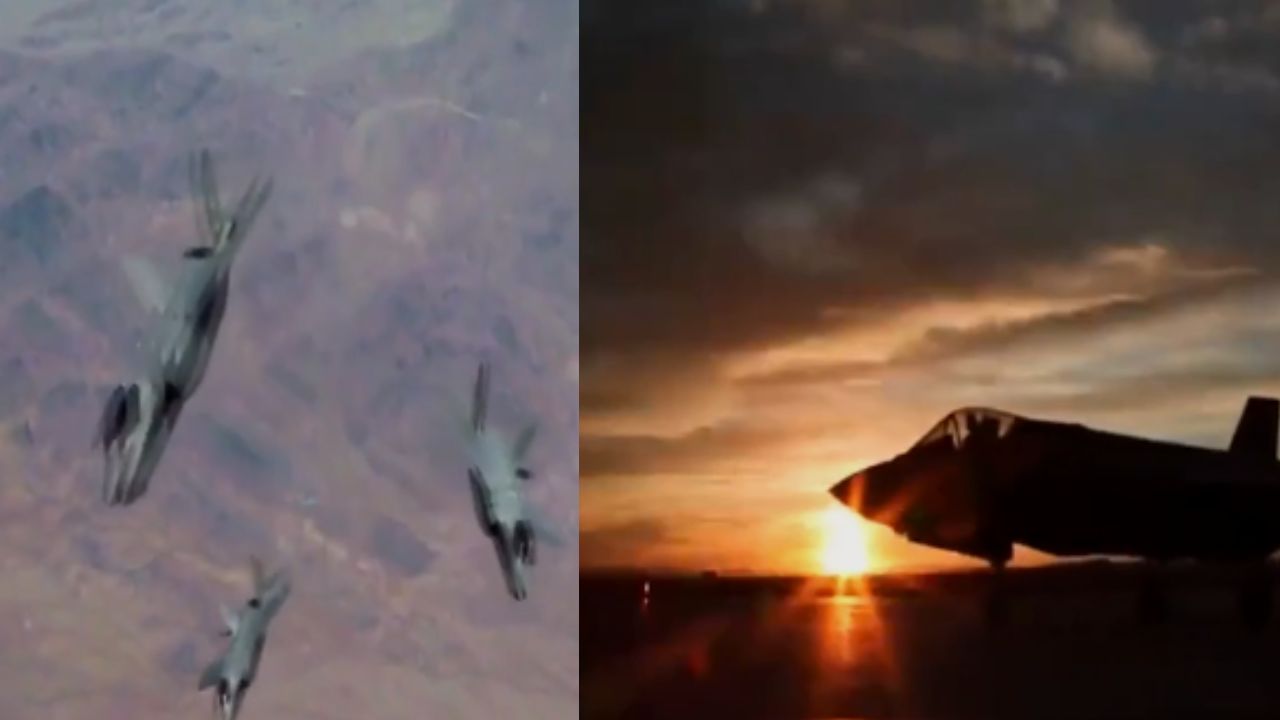
No F-35s From the US? India Explores Alternatives Amid Trump-Era Tariff Turbulence
In the ever-evolving landscape of global defense and diplomacy, India finds itself at a critical juncture once again. With the much-anticipated procurement of F-35 fighter jets from the United States hanging in the balance, New Delhi is reportedly reassessing its military aviation strategy. The latest turbulence stems from a resurfacing trade row linked to Trump-era tariffs, which has added friction to the Indo-US defense partnership. Now, India is weighing its options, considering both indigenous and international alternatives to maintain its strategic edge in the region.
The F-35: A Symbol of Strategic Partnership?
The F-35 Lightning II, developed by Lockheed Martin, is often viewed as more than just a fifth-generation stealth fighter. It symbolizes a nation’s entry into a highly exclusive defense club and signifies strategic alignment with the United States. For years, India has eyed the F-35 program, not only to modernize its Air Force but also to bolster interoperability with Western forces and counterbalance regional threats, especially from China and Pakistan.
However, India has never formally placed an order for the F-35s, primarily due to geopolitical calculations, budgetary concerns, and its historical defense ties with Russia. Even as discussions grew warmer under the Biden administration, the renewed tensions over trade, particularly those linked to residual Trump-era tariffs on Indian aluminum and steel exports, seem to have cooled the momentum.
Trade Troubles Reignite Defense Dilemma
Despite being designated a Major Defense Partner in 2016, India’s relationship with the U.S. has not been without its economic disagreements. The Trump administration’s imposition of tariffs under Section 232 of the Trade Expansion Act created significant friction, prompting India to retaliate with its own tariffs. While some of these tensions were expected to ease under President Joe Biden, the unresolved trade differences have once again spilled into the defense arena.
Reports suggest that India is wary of making a big-ticket purchase like the F-35s unless broader trade disagreements are resolved. In such a high-value transaction — potentially costing over $100 million per jet — diplomatic goodwill and trust are indispensable.
India’s Alternatives: Looking Beyond the F-35If the F-35s remain out of reach, what are India’s viable options? Defense analysts point to several paths:
1. Rafale F4 and Beyond
India already operates 36 Dassault Rafale jets and has been impressed by their performance. The upcoming Rafale F4 variant, with enhanced network-centric capabilities and electronic warfare systems, could serve as a stop-gap or even long-term solution.
2. AMCA: India’s Own Fifth-Gen Fighter
The Advanced Medium Combat Aircraft (AMCA) project is India’s indigenous effort to develop a fifth-generation stealth fighter. Though still under development and expected to fly by 2028, renewed focus and investment in AMCA could be a strategic pivot, reducing dependency on foreign vendors.

3. Eurofighter Typhoon
A consortium of European nations, the Eurofighter Typhoon is a proven multirole fighter with strong operational credentials. If offered at favorable terms, it could re-enter the Indian defense conversation.
4. Sukhoi Su-57 (Checkmate Partnership?)
Though India previously walked away from the joint FGFA program with Russia, Moscow has recently offered newer versions like the Su-57 and the upcoming Su-75 Checkmate. While these fighters may not yet match the F-35’s ecosystem, they offer an alternative route at a potentially lower cost.
Strategic Implications: Defense vs. Diplomacy
India’s defense procurement is not merely about firepower — it’s a geopolitical balancing act. While closer defense ties with the U.S. help counter China’s aggression in the Indo-Pacific, dependence on American systems could invite operational vulnerabilities or political strings in future conflicts. On the other hand, deepening relations with Europe or pursuing indigenous capabilities reflects a more autonomous security doctrine.
What Lies Ahead?
As the U.S.-India strategic partnership continues to evolve, the F-35 remains both a prize and a puzzle. Until trade disputes are resolved and mutual trust restored, New Delhi is unlikely to commit to such a politically sensitive purchase. In the meantime, the Indian Air Force is focused on bolstering its fleet through upgrades, indigenous innovation, and multi-vendor partnerships.
Whether the skies over South Asia will someday be guarded by the F-35 or its alternatives, one thing is clear: India’s air power ambitions will not be grounded by geopolitics — only redirected.
Conclusion:
India’s decision on whether to pursue the F-35 will ultimately hinge on more than just price tags and specifications. It will reflect the state of global alliances, the maturity of its indigenous defense ecosystem, and its vision for self-reliant security. Until then, every aircraft on the radar will be scrutinized not just as a machine of war — but as a symbol of sovereignty and strategy.



